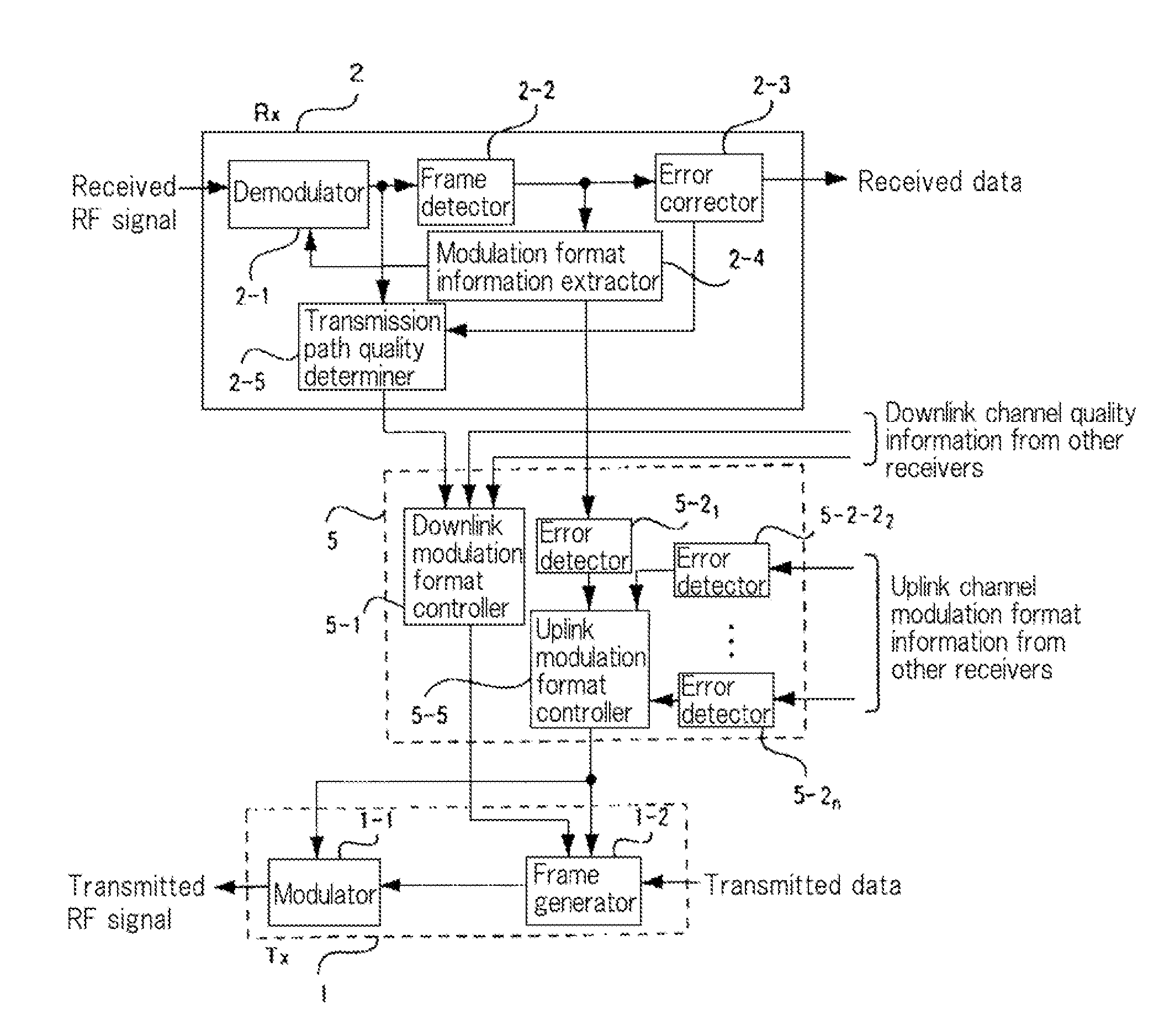Adaptive modulation method, radio communication system, and radio device
- Summary
- Abstract
- Description
- Claims
- Application Information
AI Technical Summary
Benefits of technology
Problems solved by technology
Method used
Image
Examples
first exemplary embodiment
[0037]FIG. 1 is a block diagram showing a structure of a radio communication system according to a first exemplary embodiment of the present invention.
[0038]Referring to FIG. 1, the radio communication system is applicable to an FDD (Frequency Division Duplex)-based stationary microwave radio communication system and so forth, that use different frequencies for transmission and reception. The radio communication system includes radio devices 10, 20 that can mutually communicate with each other through radio channels. Radio device 10 has transmitters 1, 3, receivers 2, 4, modulation format control section 5, coupler 6, and antenna 7. Radio device 20 has transmitters 11, 13, receivers 12, 14, modulation format control section 15, coupler 16, and antenna 17.
[0039]In radio device 10, transmitter 1 and receiver 2 are active devices, whereas transmitter 3 and receiver 4 are backup devices.
[0040]Transmitter 1 outputs a transmission signal that contains data D1 and respective pieces of modu...
second exemplary embodiment
[0093]FIG. 5 is a block diagram showing a structure of a radio communication system according to a second exemplary embodiment of the present invention.
[0094]The structure of the radio communication system according to this embodiment is the same as that according to the first exemplary embodiment except that in the former, transmitters 3, 13 and receivers 4, 14 are used as active devices rather than backup devices. In other words, in the radio communication system according to the second exemplary embodiment, radio devices 10, 20 are connected through a plurality of uplink channels and a plurality of downlink channels. Since the operation of each section of radio devices 10, 20 is the same as that according to the first exemplary embodiment, their description is omitted.
third exemplary embodiment
[0095]FIG. 6 is a block diagram showing a structure of a radio communication system according to a third exemplary embodiment of the present invention.
[0096]The radio communication system according to this embodiment is different from that according to the first exemplary embodiment in that the former uses co-channel transmission. In the co-channel transmission, one channel is used, for example, as a first channel through which a vertically polarized radio signal is transmitted and a second channel through which a horizontally polarized radio signal is transmitted.
[0097]To perform the co-channel transmission, the radio communication system according to this embodiment uses couplers 6a, 6b instead of coupler 6; and couplers 16a, 16b instead of coupler 16. In this example, each of antennas 7, 17 can transmit a vertically polarized radio signal and a horizontally polarized radio signal. The other structures of the radio communication system according to this embodiment are basically th...
PUM
 Login to View More
Login to View More Abstract
Description
Claims
Application Information
 Login to View More
Login to View More - R&D
- Intellectual Property
- Life Sciences
- Materials
- Tech Scout
- Unparalleled Data Quality
- Higher Quality Content
- 60% Fewer Hallucinations
Browse by: Latest US Patents, China's latest patents, Technical Efficacy Thesaurus, Application Domain, Technology Topic, Popular Technical Reports.
© 2025 PatSnap. All rights reserved.Legal|Privacy policy|Modern Slavery Act Transparency Statement|Sitemap|About US| Contact US: help@patsnap.com



